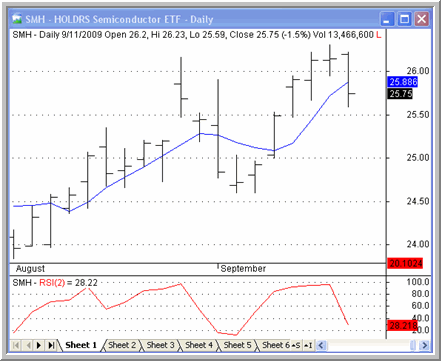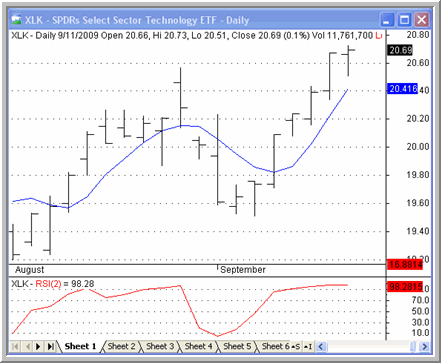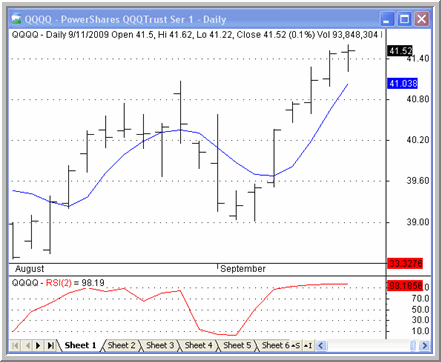High Probability ETF Strategies for Traders: Will SMH Lead XLK Lower?
Equity indexes began to pullback on Friday, but only slightly. And the earliest indications on Monday morning suggest that what began on Friday as equity index, country and sector exchange-traded funds (ETFs) stalled in overbought territory above the 200-day moving average may continue on Monday with more selling in the short term.
Of those ETFs that showed any weakness on Friday, some of the most pronounced weakness – outside of the commodities space – were semiconductor ETFs. Consider the pullback in the Semiconductor HOLDRS ETF
(
SMH |
Quote |
Chart |
News |
PowerRating) on Friday (below).

What may be most interesting about the pullback in SMH, from an ETF strategy perspective, is the fact that technology ETFs representing a broader cross-section of the sector have yet to pullback with the same aggression. If sellers do come to overwhelm buyers in general over the next few days, then it may be the case that the pullback in semiconductor ETFs has helped anticipate weakness in technology ETFs in general (see the Technology Select Sector SPDR ETF
(
XLK |
Quote |
Chart |
News |
PowerRating) below).

And if there is weakness in technology in general, then one ETF strategy for traders to consider is to look not just at technology ETFs for potential short-term pullbacks, but to indices like the Nasdaq 100 (see the PowerShares QQQ Trust ETF
(
QQQQ |
Quote |
Chart |
News |
PowerRating) chart below) and perhaps even the Russell 2000. These two equity indexes tend to have a relatively number of technology-related stocks compared to, for example, the S&P 500, represented by the
(
SPY |
Quote |
Chart |
News |
PowerRating) and the Dow industrials, represented by the
(
DIA |
Quote |
Chart |
News |
PowerRating).

Recall that buying weakness above the 200-day moving average is key to high probability ETF trading. In fact, all of our ETF strategies involving non-leveraged ETFs rely on buying oversold pullbacks above the 200-day. Insofar as all of the ETFs in today’s discussion are trading above the 200-day, high probability traders should be focusing their ETF strategies on those ETFs that end up pulling back the most over the next few days – whether that pullback is in a sector fund, a sub-sector fund or an equity index funds.
With Larry Connors’ High Probability ETF Trading Software, retail traders have access to the same kind of high probability, “buy the selling, sell the buying” trading strategies that professional traders have used successfully for decades.
Click here to start your free trial to Larry Connors’ High Probability ETF Trading Software today!
David Penn is Editor in Chief at TradingMarkets.com.
